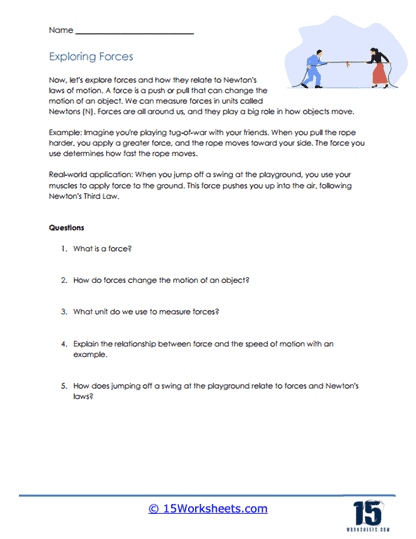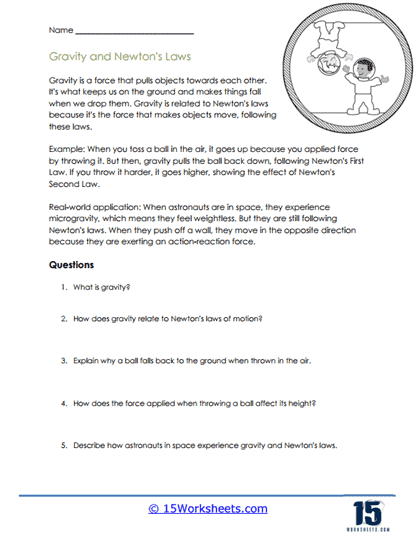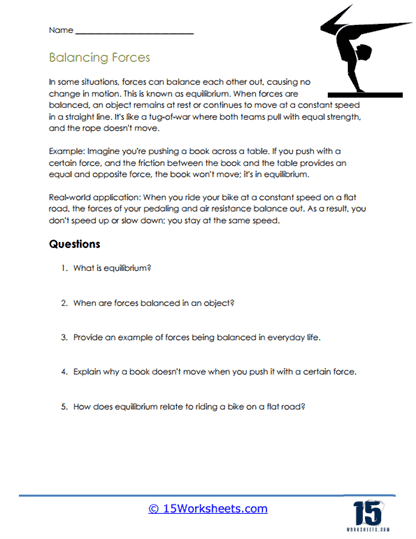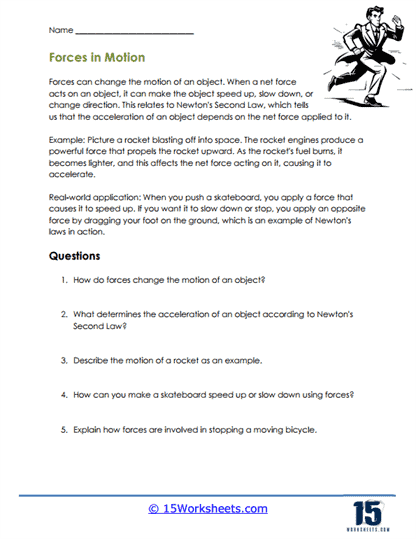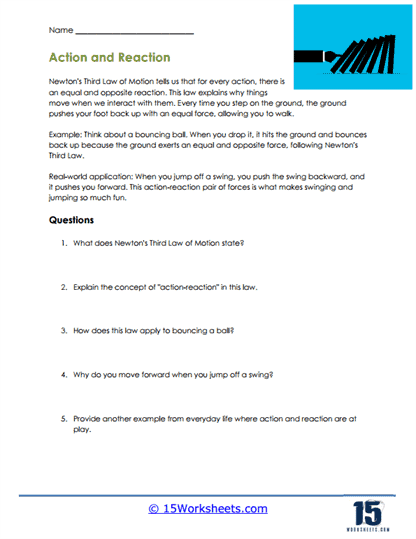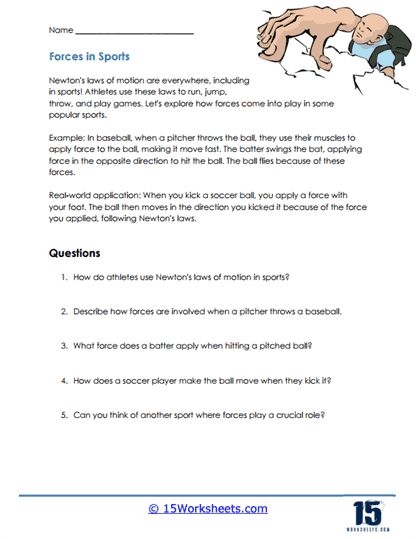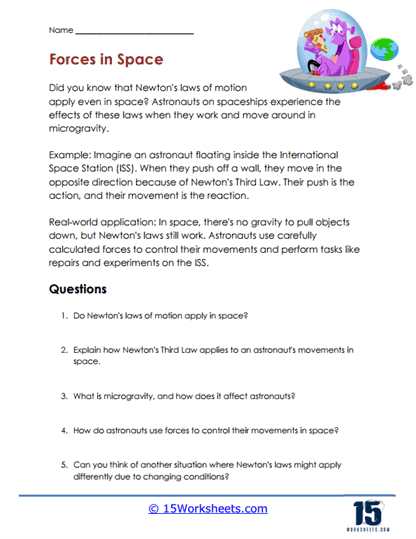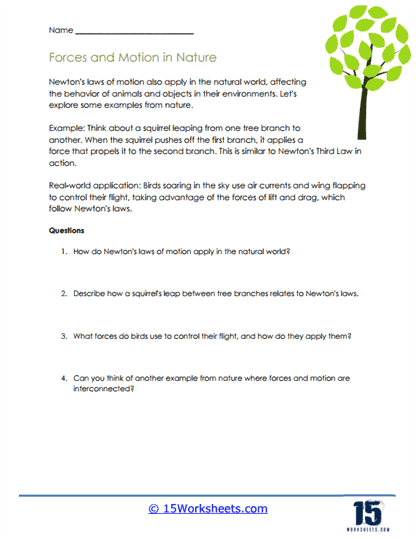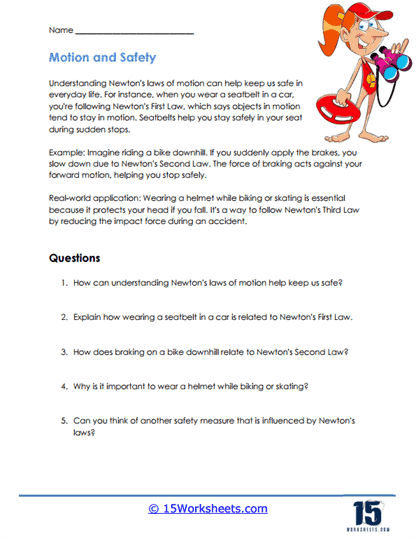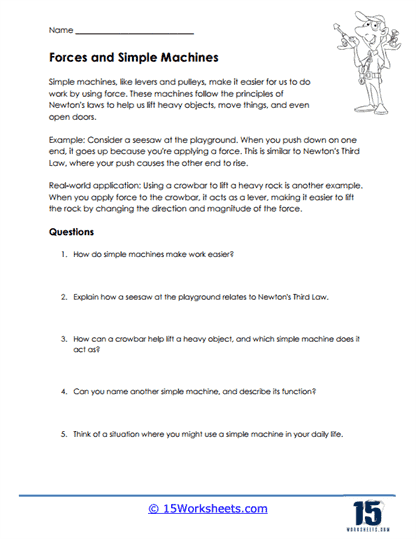Newton's Laws of Motion Worksheets
About These 15 Worksheets
Newton’s Laws of Motion form the cornerstone of classical mechanics, elucidating how objects move and interact with forces in the universe. We created these worksheets to help students understand and apply these fundamental laws. Such worksheets often include explanations, diagrams, and a variety of problems and exercises tailored to test and strengthen a student’s grasp of the concepts.
This collection of 15 worksheets serves as a valuable resource for students on some of the fundamental principles of physics. Understanding these laws is crucial as they form the basis for comprehending the behavior of objects in motion. By engaging with these worksheets, students will not only grasp the concepts of inertia, force, acceleration, and action-reaction, but they will also develop critical thinking and problem-solving skills as they apply these laws to real-world scenarios. Ultimately, mastering Newton’s Laws of Motion empowers students to analyze and explain a wide range of physical phenomena, fostering a deeper appreciation for the workings of the natural world and the foundation of modern physics.
Types of Problems and Exercises On These Worksheets
Conceptual Questions – These might ask students to explain the concept of inertia in their own words or identify real-world examples of the first law in action.
Diagram Analysis – Diagrams showing various scenarios (e.g., a ball on a frictionless surface, a book on a table) where students determine whether the forces are balanced or unbalanced.
Calculation Questions – Given two of the variables (force, mass, or acceleration), students would be tasked with calculating the third. For instance, given a car’s mass and acceleration, calculate the net force acting on it.
Graphical Analysis – Graphs depicting acceleration vs. force or other related variables might be provided, with students extrapolating or interpreting data.
Identifying Pairs – Given scenarios or diagrams, students identify the action-reaction force pairs. For example, if a person is pushing a wall, the wall pushes back with an equal and opposite force.
Comparative Questions – Exploring misconceptions, such as the difference between the force a heavy truck and a small car apply on each other upon collision.
By working through a mix of conceptual questions, calculations, and real-world scenarios, learners solidify their grasp on how objects move and interact in the universe. These laws not only offer insights into everyday experiences but also serve as the basis for much of the broader study of physics, making their mastery essential for anyone delving deeper into the sciences.
Newton’s First Law of Motion – The Law of Inertia
The first law, also known as the law of inertia, states that an object will remain at rest or in uniform motion in a straight line unless acted upon by an external unbalanced force.
Newton’s Second Law of Motion – Force Equals Mass Times Acceleration
The second law states that the force acting on an object is equal to the mass of that object times its acceleration (F = ma). This law establishes the relationship between force, mass, and acceleration.
Newton’s Third Law of Motion – Action and Reaction
The third law poses that for every action, there is an equal and opposite reaction. This means that if one object exerts a force on a second object, the second object exerts a force of equal magnitude and in the opposite direction on the first object.





